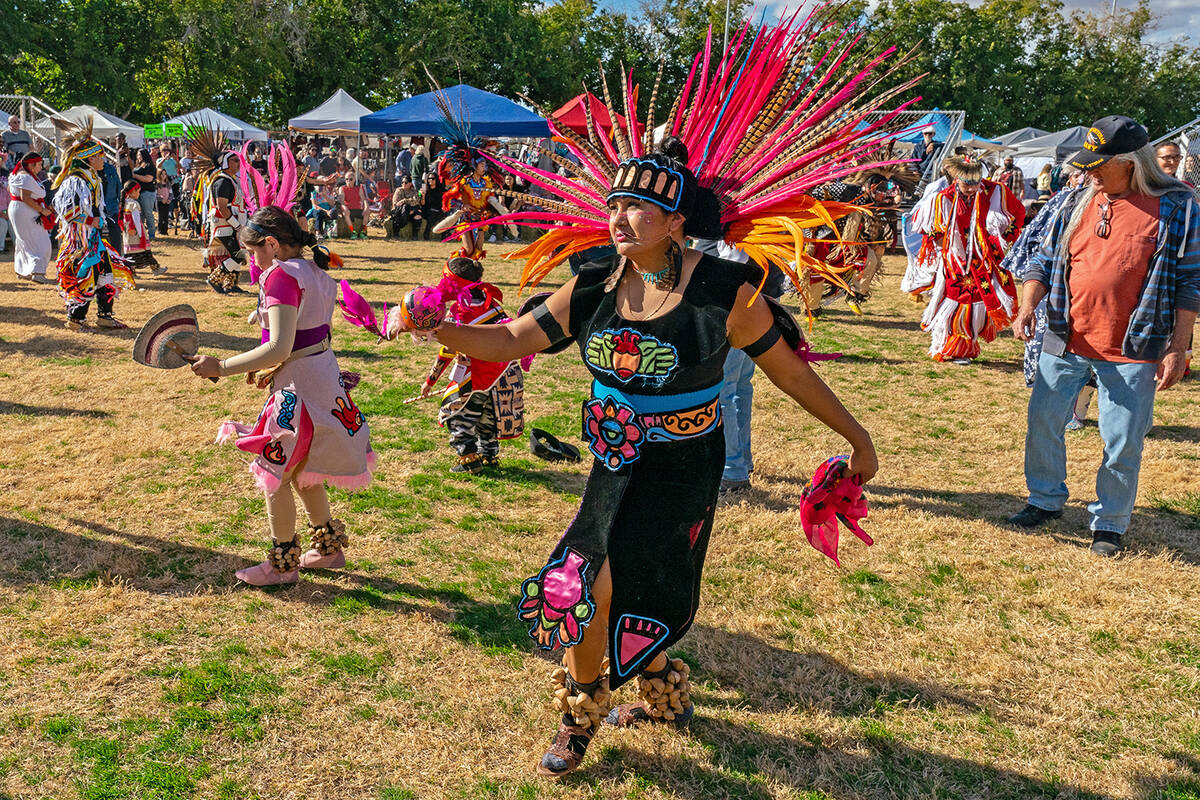What to know about Nevada’s Native American tribes
Long before Mormons settled at the foothills of the Sierra Nevada in Genoa or Mexican trader Antonio Armijo coined the term “Las Vegas” en route to Los Angeles, Native tribes roamed the Silver State for centuries.
Nevada has 21 federally recognized tribes that span 28 reservations, bands, colonies and community councils, according to UNR’s Office of Indigenous Relations. The state’s tribal lands total more than 1.6 million acres.
There are five larger groups that tribes identify with in Nevada, all with their own distinct histories, languages and traditions. Here’s a little about each of them.
Nuwuvi (Southern Paiute)
Southern Nevada, of which the landscape has changed drastically over the past 100 years, stands on Nuwuvi land.
Before they came into contact with settlers, their territory included southeastern California, Southern Nevada, northern Arizona and Southern Utah, UNLV historians say.
“Outsiders who came to the Paiutes’ territory often described the land as harsh, arid and barren,” the Las Vegas Paiute Tribe writes on its website. “However, the Paiutes developed a culture suited to the diverse land and its resources.”
The Las Vegas Paiute Tribe has a reservation on the northwestern corner of the city, where it operates a golf course, marijuana dispensary, smoke shop and police department. The Moapa Band of Paiutes, which has a large solar project on its reservation, also falls under the Nuwuvi.
Derived from the Uto-Aztecan language family, the Southern Paiute language has many dialects that are similar, according to UNLV historians.
Numa (Northern Paiute)
The Northern Paiutes, or Numa, believe that power lies in everything natural, like water and the sun, the Pyramid Lake Tribe writes on its website.
For instance, the Pyramid Lake Paiute Tribe, located north of Reno, calls its members Kuyuidokado, or Cui-ui eaters, after the endangered Cui-ui fish that’s found nowhere else in the world.
The Pyramid Lake Paiute and the Walker River Paiute are some of the few tribes that never were forced to completely relocate, according to Nevada’s Indian Territory. They live in areas across the state like Lovelock, McDermitt, Mason Valley, Smith Valley, Pyramid Lake, Reno-Sparks, Stillwater, Fallon, Summit Lake and Walker River.
Newe (Western Shoshone)
In addition to the Duckwater Indian Reservation in northern Nye County, the Western Shoshone live across the state in places like Battle Mountain, Elko, Wells and Fallon.
The Te-Moak Tribe, based in Elko, said the Newe once had claims to southern Idaho, central Nevada, parts of northwestern Utah and Southern California’s Death Valley.
“The Newe knew their lands and cared for its natural balance; for them it was a land of plenty,” the tribe wrote on its website.
The Western Shoshone people have a history of legal battles with settlers over broken treaties, and the Te-Moak Tribe was federally recognized in 1938 after the U.S. government tried to move a group of Newe people to a reservation in Duck Valley.
Wá∙šiw (Washoe)
The center of the world for Wá∙šiw people is Lake Tahoe, the tribe’s history states.
Linguists believe that the Washoe people predated other Great Basin Tribes, as their language is the only one that isn’t considered Numic, within the Uto-Aztecan language family. By 1862 miners, settlers and others overtook the tribe, and it was left with no land at all, according to the U.S. Forest Service.
Today, about 1,500 enrolled tribal members live on tribal lands in Reno, Carson Valley and Gardnerville, as well as Woodfords, California, according to the forest service’s website.
Mojave People
Known as “The People of the River,” the Mojave people are split between two reservations — the Fort Mojave Reservation at the junction of Arizona, California and Nevada, as well as Colorado River Indian Tribes Reservation, mostly in Arizona.
The tribe once relied on the annual flooding of the Colorado River to begin a growing season. The Mojave people were the most populous people in the 16th century, the tribe’s history states.
In 1848, the land became U.S. territory and the government established Fort Mojave, a military fort, which symbolized growing tensions. It was closed in 1891.
The tribe operates two casinos on the Fort Mojave Reservation today, along with a golf course.
Contact Alan at ahalaly@reviewjournal.com. Follow @AlanHalaly on X.



















